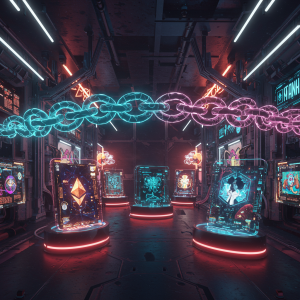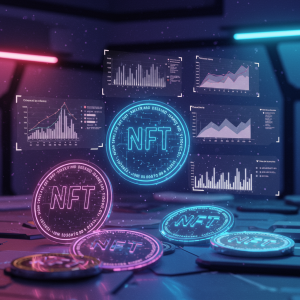The Ultimate Guide to Influencer Marketing for NFTs: Boost Your Reach & Sales

In a crowded digital landscape, NFT projects need powerful strategies to stand out. While social media ads and community building remain vital, influencer marketing offers an authentic pathway to reach passionate audiences. By partnering with trusted voices in the art, gaming, and crypto spheres, you can humanize your NFT collection, build credibility, and drive meaningful engagement.
What Is Influencer Marketing and Why It Matters for NFTs

Influencer marketing involves collaborating with individuals who have established credibility and a loyal following. In the NFT space, these influencers range from digital artists to blockchain enthusiasts. Their endorsements can spark excitement, drive secondary sales, and expand your community beyond usual channels. Unlike traditional ads, influencer content resonates because it emerges organically within trusted conversations. When done right, this approach amplifies reach, fosters authenticity, and accelerates adoption of your NFT project.
Identifying the Right Types of NFT Influencers
Not all influencers deliver the same impact. Selecting partners aligned with your brand values and target audience is crucial. Here are common categories to consider:
- Micro-Influencers (10K–50K followers): Highly engaged communities; cost-effective; ideal for niche art scenes.
- Macro-Influencers (50K–500K followers): Balanced reach and engagement; suitable for mainstream crypto audiences.
- Celebrity Influencers (500K+ followers): Massive exposure; higher budgets; best for blue-chip NFT drops.
- Platform-Specific Tastemakers: Twitter crypto analysts, YouTube NFT reviewers, and Discord community leaders who drive conversations in specialized forums.
How to Find and Vet Potential Influencers
A systematic vetting process prevents wasted budgets and brand mismatches. Follow these steps:
- Audience Analysis: Use analytics tools to verify follower demographics, engagement rates, and audience interests.
- Content Relevance: Review past posts to ensure the influencer discusses NFTs, digital art, or blockchain topics authentically.
- Engagement Quality: Look beyond like counts—evaluate comments, retweets, and shares to gauge real community interaction.
- Brand Alignment: Ensure the influencer’s tone and values complement your project’s vision to maintain authenticity.
- Past Partnerships: Check for previous NFT campaigns or similar collaborations to assess performance and reliability.
Crafting an Effective Influencer Campaign Strategy
A well-structured campaign elevates both your NFT project and the influencer’s brand. Consider these best practices:
- Clear Objectives: Define KPIs such as mint count, website visits, or Discord sign-ups before outreach.
- Creative Freedom: Allow influencers to share their honest perspective to maintain trust with their audience.
- Content Mix: Blend static images, short videos, live streams, and AMAs to cater to diverse preferences.
- Exclusive Perks: Offer early access, limited-edition NFTs, or discount codes to incentivize engagement.
- Cross-Promotion: Leverage the influencer’s network by coordinating posts across Twitter, Instagram, YouTube, and Discord.
Negotiating Compensation and Contracts
Compensation models can include flat fees, performance-based payments, or NFT airdrops. When negotiating:
- Be Transparent: Clearly outline deliverables, timelines, and exclusivity clauses in writing.
- Align Incentives: Structure bonuses for hitting mint targets or driving secondary sales to motivate influencers.
- Protect IP Rights: Specify usage rights for content to avoid disputes over ownership and future promotions.
Measuring and Optimizing Influencer ROI
Tracking performance is essential for justifying spend and refining future campaigns. Key metrics include:
- Engagement Rate: Likes, comments, and shares relative to follower count.
- Traffic Attribution: Monitor clicks and conversions using UTM codes or referral links.
- Mint Volume: Count NFT sales directly attributable to influencer promotions.
- Community Growth: Measure increases in Discord members, Twitter followers, or newsletter subscribers.
- Sentiment Analysis: Use social listening tools to assess audience reactions and brand perception.
Regularly share reports with influencers to foster collaboration and adjust content strategies in real time.
Case Studies: Successful NFT Influencer Campaigns

1. ArtBlock Syndicate partnered with 10 micro-influencers for a blind mint campaign. By offering early previews and exclusive giveaways, they achieved a 90% sell-out in under 2 hours.
2. PixelPioneers collaborated with a major YouTube NFT reviewer to launch a tutorial series. The in-depth walkthroughs led to sustained traffic and a 40% increase in secondary market volume post-drop.
Common Pitfalls and How to Avoid Them
- Overspending on Celebrity Influencers: High fees don’t guarantee better results. Balance reach with engagement quality.
- Ignoring Micro-Influencers: Niche creators often deliver higher ROI through genuine connections.
- Lack of Clear Briefs: Ambiguous directives lead to off-brand messaging and missed objectives.
- Failure to Track Results: Without data, you can’t optimize campaigns or justify budgets.
Conclusion
Influencer marketing has emerged as a cornerstone strategy for NFT projects seeking rapid growth and long-term credibility. By carefully selecting partners, crafting authentic campaigns, and rigorously tracking performance, you can unlock new audiences and drive meaningful engagement. Whether you’re launching your first collection or scaling an established brand, the principles in this guide will help you harness the power of influencers to achieve your NFT marketing goals.
Ready to elevate your next NFT drop? Start building relationships with the right influencers today and watch your project thrive in the ever-evolving digital art ecosystem.





